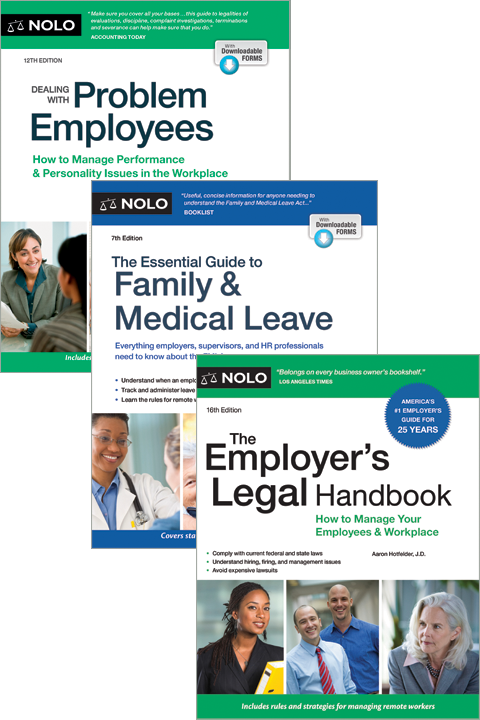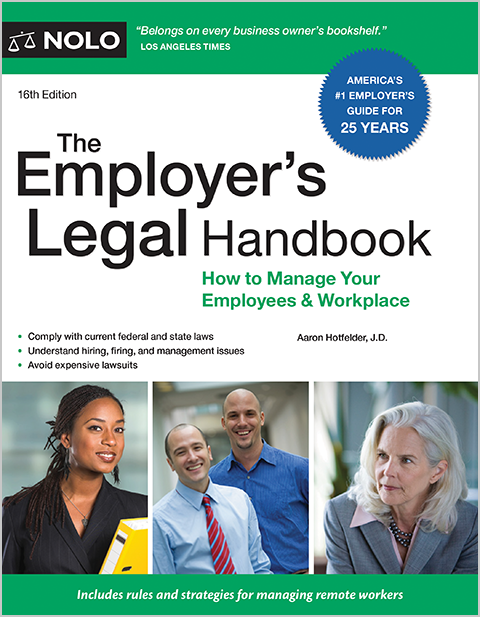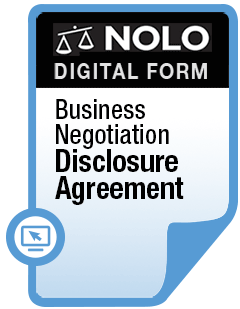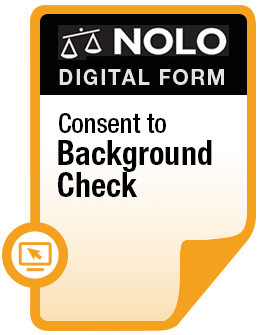The Equal Employment Opportunity Commission enforces federal laws prohibiting workplace discrimination.
The Equal Employment Opportunity Commission (EEOC) is an agency of the federal government, created by the Civil Rights Act of 1964 (Title VII). The purpose of the EEOC is to interpret and enforce federal laws prohibiting discrimination.
To achieve these goals, the EEOC holds hearings, administers equal employment opportunity laws for employees of the federal government, issues regulations interpreting the law, and litigates discrimination cases, among other things. The EEOC also accepts charges of discrimination from employees, investigates those charges, and attempts to mediate settlements between employees and employers.
Federal Laws Enforced By the EEOC
The EEOC is responsible for interpreting and enforcing most – but not all – federal laws that prohibit employment discrimination, including:
- Title VII of the Civil Rights Act of 1964. Title VII prohibits workplace discrimination on the basis of race, color, national origin, sex (including sexual orientation and gender identity), and religion. Since the 1980s, courts have also interpreted Title VII to prohibit harassment based on these characteristics. Title VII prohibits employers from retaliating against employees who complain of discrimination or otherwise assert their rights under the law.
- The Pregnancy Discrimination Act. After a Supreme Court case in 1976 found that discriminating against pregnant women does not necessarily violate Title VII, Congress amended the law to clarify that pregnancy discrimination is a form of illegal sex discrimination.
- The Equal Pay Act. The Equal Pay Act requires employers to pay men and women equally for doing equal work. Because the Equal Pay Act was passed before the Civil Rights Act of 1964 created the EEOC, it was originally enforced by the federal Department of Labor.
- The Americans with Disabilities Act (ADA). The ADA protects employees and applicants with disabilities from discrimination. Employees and applicants are protected if they have a disability, have a record of disability, or are regarded by the employer – even incorrectly – as having a disability. The ADA also requires employers to provide reasonable accommodations to allow employees with disabilities to do their jobs.
- The Age Discrimination in Employment Act (ADEA). The ADEA prohibits age discrimination against employees and applicants who are at least 40. The ADEA also requires equal benefits for older employees and requires employers to provide certain information to older employees when they are asked to waive their right to sue for age discrimination (as part of a severance package or early retirement program, for example).
- The Genetic Information Nondiscrimination Act (GINA). GINA prohibits discrimination on the basis of genetic information. It also prohibits employers from gathering genetic information about employees in most circumstances, and requires them to keep any such information they acquire confidential.
The EEOC's Role
As the agency responsible for interpreting and enforcing these civil rights laws, the EEOC has a number of responsibilities.
Regulations and Guidance
When Congress passes a law prohibiting discrimination, the EEOC often issues regulations that interpret the law. The EEOC might also issue regulations when a law is amended or when important Supreme Court cases clarify the law.
These regulations define important terms used in the statute, establish procedures for enforcing employee rights, and generally fill in the gaps left by Congress so both employees and employers are clear on their rights and obligations under the law.
Sometimes, the EEOC also issues enforcement guidance on specific issues, such as using criminal records in hiring or applying the ADA to employees with mental disabilities. These documents explain how the law works in the real world, typically using lots of examples to flesh out the details.
When the EEOC is considering regulatory action or looking at developing civil rights issues, it often holds hearings and solicits public comments to inform its decision-making process.
Federal Employee Rights
The EEOC is also responsible for EEO compliance in the federal government. If a federal government employee wants to complain about discrimination, harassment, or retaliation, the employee must first file a complaint with the EEO office in the employee's own agency, which investigates and processes the complaint.
The complaint may be heard – and a decision issued – by an administrative law judge. If the employee isn't satisfied with the outcome, the employee can appeal to the EEOC's Office of Federal Operations.
Charge Processing
The primary way most employees encounter the EEOC is through its charge-handling function. The EEOC takes charges (complaints) of discrimination from employees and applicants.
Filing a charge is a legal prerequisite to filing a lawsuit; employees who fail to complain to the EEOC (or a similar state agency) and give it an opportunity to process the charge won't be allowed to sue.
Once the EEOC receives a charge, it evaluates the employee's claims and decides how to proceed. Among the options:
- The agency may dismiss the charge, if it concludes that it has no jurisdiction (for example, because the employee missed the deadline to file a charge or the employee's claims don't violate the law).
- The EEOC may investigate the charge. The agency may interview witnesses, ask the employer and employee to provide information, gather documents, and even visit the workplace.
- The EEOC may try to mediate a settlement of the case. In mediation, the employee and employer sit down together with a neutral third party to try to come up with a solution to the problem. If everyone agrees, the mediated settlement will resolve the case.
- The agency may issue a finding, either that cause exists to believe discrimination took place or that no such cause exists.
- The EEOC may decide to litigate the charge itself on behalf of the employee. This is exceedingly rare. Typically, the EEOC takes a case on only if it raises novel or important issues the agency wants to prosecute.
If the employee wants to go ahead with a lawsuit while the EEOC is still processing the charge, the employee may request a right to sue letter. (Even if the employee doesn't request one, the EEOC will issue a right to sue letter to the employee once it finishes processing the charge.) This aptly named document states that the employee has met the requirement of filing a charge and may proceed to court.
When to Contact an Employment Law Attorney
If you're considering filing a charge of discrimination or harassment with the EEOC, or if your complaint has been denied, contact an attorney specializing in employment law. A lawyer can explain your legal options and, if necessary, help you file a discrimination lawsuit.
Talk to a Lawyer
Need a lawyer? Start here.
How it Works
- Briefly tell us about your case
- Provide your contact information
- Choose attorneys to contact you
- Briefly tell us about your case
- Provide your contact information
- Choose attorneys to contact you



